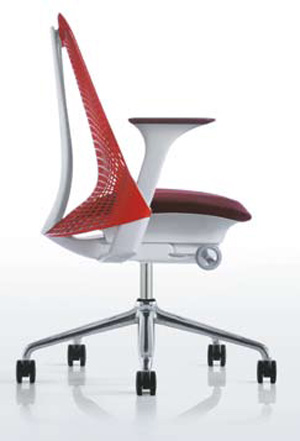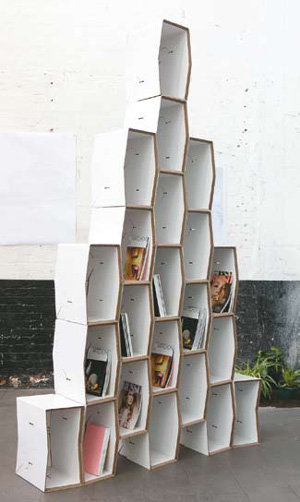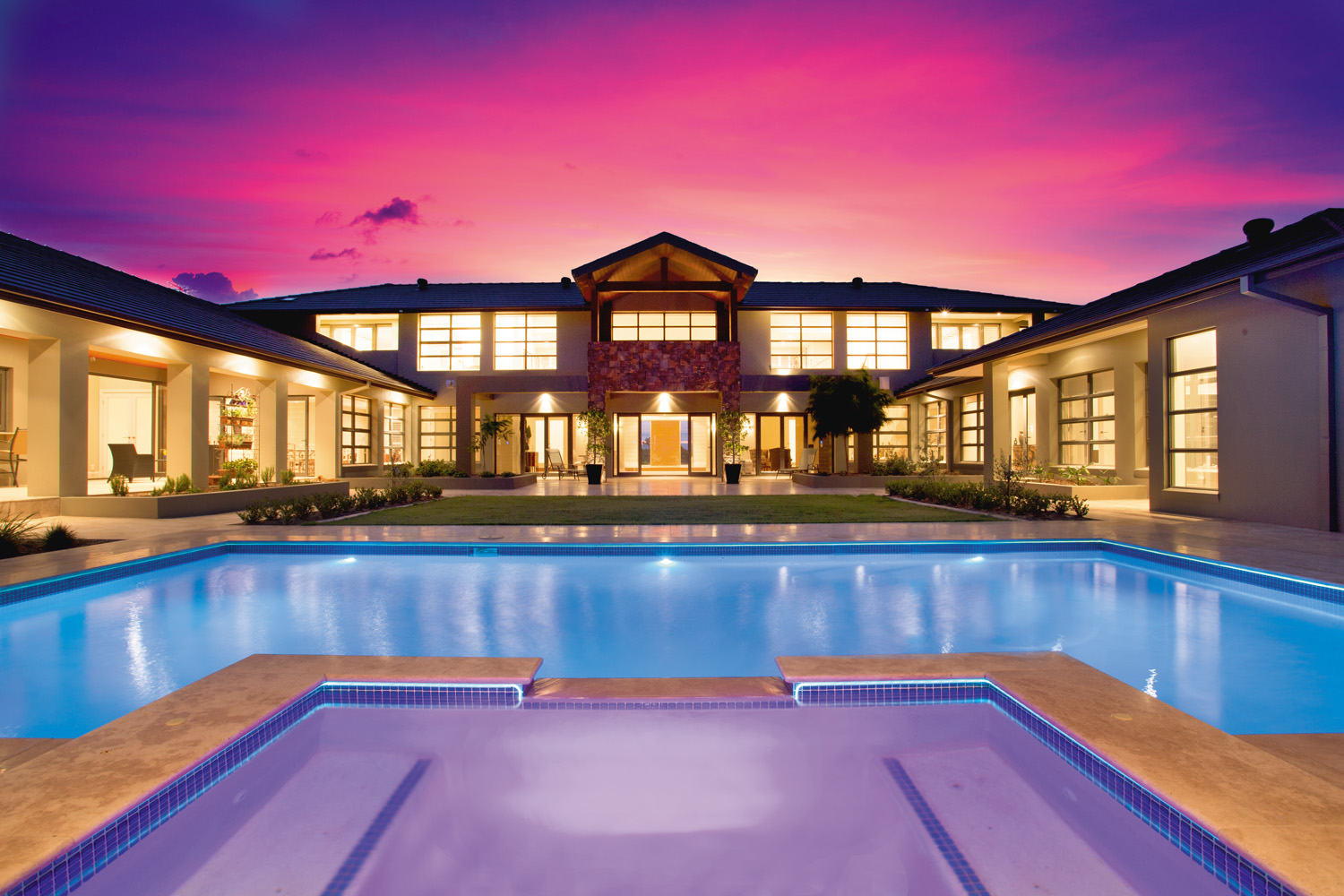
Multitasking may be bad for our brains, but having your equipment do it is a sustainable option for your media room or study. Office products are excellent multitaskers. If you’re in the market for a printer, buy one with a scanner and copier built in. Not only will you save space, you’ll reduce your embodied energy requirements significantly. Of course, rather than investing in new digital toys, see if upgrading will do the job instead; simply installing a new hard drive might buy you another two years on your trusty laptop.
Do not disturb
If your only potential nook for writing, studying or being creative doesn’t feel separate enough from the rest of your space, Melbourne architect Toby Horrocks may have the solution. His Freefold furniture is made from recycled cardboard and can function as a bookshelf, TV cabinet or screening wall that can be flat-packed away when no longer needed. This 100 per cent recyclable eco storage solution is perfect for renters and artists or, as Sustainability Victoria found when it used Freefold for an exhibition, funky display stands. www.freefoldfurniture.com
Sit back sustainably
His commitment to both style and sustainability makes Yves Bihar a hero to many in the world of industrial design, but it’s likely that the recipients of his most high-profile product, the $100 laptop, aren’t using it in a media room. The One Laptop Per Child project aims to get $100 laptops to the developing world and Bihar’s skill ensured the result was not only stylish but splash-proof, drop-proof and kid friendly. Those of us in the developed world are more likely to be coveting the SAYL chair Bihar designed for Herman Miller. As part of their cradle-to-cradle philosophy, the chair is 93 per cent recyclable at the end of its life. $399 from www.hermanmiller.com.
One Laptop Per Child: www.fuseproject.com
Screen savers
Plasma is often a dirty word in eco circles, but TV fans love plasma screens for their ability to handle the dark colours. Still, the lighter, thinner LCD (Liquid Crystal Display) is usually a better eco choice; Choice points out that LCDs generally consume less power than a plasma TV of the same size. It’s because they backlight via fluorescents, which is a more efficient way of operating than plasma’s UV light approach. Both use far less energy than the fatter, older TVs we (used to) love but that doesn’t mean getting rid of a TV on a whim is a good plan. E-waste is a huge problem in Australia that manufacturers and governments are struggling to solve. www.choice.com.au
Switch your switch
Given our media room may be powering a PC, printer, television, DVD player, and all manner of other equipment, turning everything off when you leave the room can involve a lot of crawling under desks. At least it used to until electricians and builders started putting “green switches” into home renovations. With the flick of a switch, all designated electrical items are switched off as you leave, saving you up to 10 per cent of your annual energy bill and giving the planet a break each time you take one. www.savepower.nsw.gov.au







